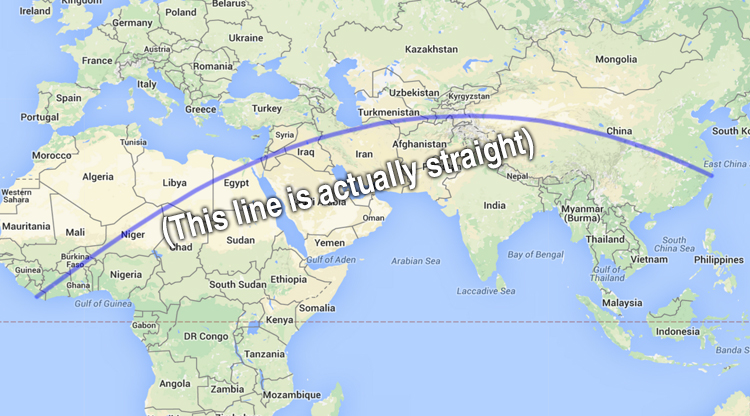There is a new, slower approach to fashion emerging in China. And it’s not just a shift away from conspicuous consumption prompted by the government’s crackdown on extravagant spending.
A young, well-educated generation of consumers and creatives is developing a market for products that go beyond runway trends and fast fashion. In a phenomenon that’s been taking shape over the last decade, a growing – albeit still relatively small – cluster of urbanites is turning its attention to garments that are fashion-forward, organic and eco-friendly, yet rooted in China’s own sartorial heritage.
The trend was spearheaded by Ma Ke, the designer behind EXCEPTION de Mixmind, the label that became a sensation when two of its pieces were donned by first lady Peng Liyuan. In 2006, she launched Wu Yong (meaning ‘useless’) in Guangzhou, an art house haute couture brand that only works with artisans using hand looms.
Shanghai label Fake Natoo followed suit in 2008. Founded by Beijinger Zhang Na, a graduate of Xi’an Academy of Fine Arts and College of MOD’ART, it offered a sustainable, upcycled approach to style, working with discarded clothing and donated textiles. Although upcycling has taken a backseat in its recent collections, Fake Natoo still works its productions alongside local cooperatives.
In 2010, Zhang started another project called Reclothing Bank (RCB), a clothing line that recycles old fabrics by reworking them into entirely new fashion pieces. The initiative marked something of a milestone for ‘green’ design in China, promoting the idea that sustainability and fashion could co-exist, despite the country’s appetite for catwalk looks quickly finding their way onto high street racks.
Over the last few years, an increasing number of designers and eco-led entrepreneurs have joined the ranks of ethically responsible fashion. And while it may be a while before ‘sustainable’ crosses over to the mainstream, it is a sign of a promising change in the industry. After all, clothes have the power to do what organic and fair-trade vegetables never could – make sustainability cool.
Here are some of the key players of what we’d like to call China’s ‘slow fashion movement.’
Summerwood

Summerwood isn’t a fashion label, but if there were ever someone to thank for the rise of sustainable garments in China, it would founder Ye Hongbo.
Literally translated from the Chinese xia mu, Summerwood is a textile company producing ramie, a natural fiber that’s been around for over 6,000 years. Once the staple material of traditional Chinese costumes, the fabric – brittle, highly resistant, somewhere between linen and hemp – was largely forgotten in recent years, until Ye decided to revive it and bring it back into production.
The 36-year-old Hunan native established a factory in his hometown of Liuyang in 2013, after deciding to quit his job as fashion features editor at Outlook magazine to “focus on a different, still overlooked aspect of the industry.” Currently, Summerwood is the only company in China working with ramie.
“I became more aware of the environmental issues faced by our country and decided to try to make a change, starting from what I knew best – garments,” he says. “Fashion is a lot more than aesthetics. It’s about fabrics, dyes and production. That’s where the core of ‘green’ fashion starts and that’s what I am focusing on with Summerwood.”
Based in Beijing, Ye takes care of the commercial side of the business from a quaint office in Dashilar, one of the capital’s most weathered neighborhoods. Summerwood’s spinners and weavers are based in Liuyang, while the dyeing facilities – which only use local plants and herbs – can be found in Yunnan.
Ramie is not yet a certified organic fabric according to GOTS (Global Organic Textile Standards, the main global board certifying textiles made from organic fibers), but it’s the closest you’ll get to an eco-sustainable material in China today. “Like-minded, eco-aware designers have taken notice,” says Ye.
Indeed, a small number of China-based creatives – including Boundless, NEEMIC, Renli Su and Digest Design Workshop – have become regular Summerwood customers. As well as purchasing the fabric from Ye and integrating it in their collections, some have also sought collaborations with the company. During Shanghai Fashion Week last year, designer Renli Su featured some of Ye’s handcrafted fabrics on her catwalk.
“There’s been a newfound attention from the industry, from the government even, [that] we could have only dreamed of when I first started Summerwood,” Ye explains. “Eco-awareness has come a long a way, but there’s still a lot to do. It is a slow labor of love.”
Tianmo Momo Wang

Based in London but traveling frequently to China, Tianmo Momo Wang defines herself as an “arts-and-crafts artist and pragmatic dreamer.”
One of China’s most vibrant and playful designers, Wang was born in Liaoning province in 1987 and started handcrafting clothes from a young age. She went on to study fashion design and fabric printing at the Central Saint Martin’s College of Art and Design in London, first catching the attention of the fashion set with her 2011 graduation show, titled ‘I Love My Print Room.’ A boisterous display of handmade pieces, it earned Wang three major awards from her university. The following year, she established her personal studio Mending Point in London, where she works on upcycled fashion, turning unwanted material into desirable items.

All of Wang’s collections – three more have followed since her sartorial debut – are characterized by whimsical takes on reinvention and revalue. She draws inspiration from traditional patchwork, quilting, indigo dyes and retro prints, constructing garments from scraps found in the flea shops of London and the night markets of her hometown in Jinzhou.
The resulting pieces meander effortlessly through a world of folkloric costume references and craft skills, weaving together mismatched materials spanning PVC, crochet and potato sacks.
“I want to keep memories in my clothes, so that when I see them I can think about what I have been through and who helped me create,” she says.
NEEMIC


Although not exactly Chinese (co-founders Hans Martin Galliker and Amihan Zemp come from Switzerland) NEEMIC resulted from – and is now an integral part of China’s indie fashion realm.
Launched in Beijing in 2011 with the aim of “creating beautiful design, making the industry more sustainable and providing a platform for artistic exchange between Europe and Asia”, the label has become one of the most prominent campaigners for fair trade and organic garments in China and beyond.
All of its pieces are designed and made in the capital, striving to use as many natural and sustainable fabrics as possible. Summerwood is one of the brand’s main suppliers, with the rest of its materials sourced in Turkey, India and Germany – “not as sustainable as we would hope for, but the choice [in China] is relatively limited,” says Galliker.
“One third of our collections are made with ‘green’ threads – free from herbicides, pesticides or genetically modified seeds,” he continues. “It’s not too little but it’s still not enough. We’d really like to bring responsible fashion to the next level. And we love to show how it can be done with our designs.”

Drawing inspiration from its Eastern surroundings, NEEMIC’s aesthetic blends exotic motifs and understated details. Both rich in its narrative and casual in its loose, oversized shapes, the brand blends clean and simple cuts with a palette of muted hues, purposefully avoiding chemical coloring.
The design duo’s involvement with the sustainable discourse is not limited to fashion design: they have also worked for a more sustainable clothing industry by co-founding the Hong Kong Organic Textile Association and joining AgraChina, a network promoting organic agriculture in China.
“Despite all odds, China has its advantages when it comes to pioneering different ways of approaching sustainability,” says Galliker. “It’s a place in constant evolution and that’s the case for fashion too. The industry is moving on all levels – factories, stores, consumers. People are slowly becoming more aware that fashion has a bad image. There’s ample room for change.”
// neemic.asia
Renli Su

Fujian native Renli Su is continually in transit between Beijing, London and Shanghai. Currently based in the British capital, she is a graduate from Beijing’s Central Academy of Fine Arts, where she studied fashion design, and an alumna of the London College of Fashion, where she completed her master’s. In 2013, her first collection earned her the Creative Conscience Award endorsed by the UK Design Council.
That same year, Su launched her eponymous label and, over the course of two years, went on to showcase her lines on the runways of London, Shanghai and Paris Fashion Weeks.
The designer explains her work as “exploring the idea between time and memory.”

“I want to offer conceptual yet practical garments, to demonstrate the idea that fashion is a form of applied art which carries a profound significance,” she explains.
Su achieves just this through the creation of clothes that are down-to-earth, restrained and sternly minimal, offering an almost purist approach to design. “I want to return to the past; to a time when there were fewer materials and technologies,” she says.
Embracing the make-do-and-mend philosophy that preceded the fast-fashion era, Su mostly uses handmade, organic materials in her work, stating that she would never consider making a collection that wasn’t “exclusively ethical.” Most of her pieces are made of ramie and embellished with hand-finished printing and fraying.
Her collections – with influences spanning the Victorian age and the bygone lifestyle of Central Asia’s early nomads – offer a real, stripped-down stance on fashion.
“Garments not only retain the physical traces of their past but also form an intrinsic bond with their wearer through the memories associated with them,” she explains. “It’s all about reconstructing fabrics. There’s no need for superfluous embellishments.”





















0 User Comments